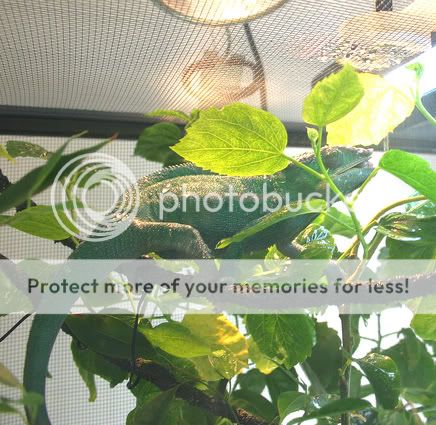royden
New Member
Quick couple q's for anyone who has the time for their two cents:
So recently I get my new chameleon hearing that you need to dust the crickets. So I buy some calcium/phosphorous and 2:1 and dust every cricket that goes down his throat for about 10 days. Then I read on hear that you shouldn't dust them that often. So I hold off, dusting every other time or so.
Then I hear that Phosphorous is a no-no.
Then I get home and find his eyes closed during the day.

First off - Sometimes it seems like he closes one eye, but keeps the one away from me open. I can see his closed eye still moving around in it's socket. So it's not like he's dozing or anything. i think....
And then I'm getting all paranoid because I wonder if I mist him enough (twice I day) 10am and 7pm. And then today i think i see an extra wrinkle in his side...ugh.
If anyone has time to comment feel free. Particulary on if I've given my cham death sentence with a calcium phosphorous suppliment for nearly 3 and half weeks.

thanks
So recently I get my new chameleon hearing that you need to dust the crickets. So I buy some calcium/phosphorous and 2:1 and dust every cricket that goes down his throat for about 10 days. Then I read on hear that you shouldn't dust them that often. So I hold off, dusting every other time or so.
Then I hear that Phosphorous is a no-no.
Then I get home and find his eyes closed during the day.
First off - Sometimes it seems like he closes one eye, but keeps the one away from me open. I can see his closed eye still moving around in it's socket. So it's not like he's dozing or anything. i think....
And then I'm getting all paranoid because I wonder if I mist him enough (twice I day) 10am and 7pm. And then today i think i see an extra wrinkle in his side...ugh.
If anyone has time to comment feel free. Particulary on if I've given my cham death sentence with a calcium phosphorous suppliment for nearly 3 and half weeks.
thanks






